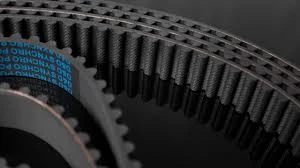- Arabic
- French
- Russian
- Spanish
- Portuguese
- Turkish
- Armenian
- English
- Albanian
- Amharic
- Azerbaijani
- Basque
- Belarusian
- Bengali
- Bosnian
- Bulgarian
- Catalan
- Cebuano
- Corsican
- Croatian
- Czech
- Danish
- Dutch
- Afrikaans
- Esperanto
- Estonian
- Finnish
- Frisian
- Galician
- Georgian
- German
- Greek
- Gujarati
- Haitian Creole
- hausa
- hawaiian
- Hebrew
- Hindi
- Miao
- Hungarian
- Icelandic
- igbo
- Indonesian
- irish
- Italian
- Japanese
- Javanese
- Kannada
- kazakh
- Khmer
- Rwandese
- Korean
- Kurdish
- Kyrgyz
- Lao
- Latin
- Latvian
- Lithuanian
- Luxembourgish
- Macedonian
- Malgashi
- Malay
- Malayalam
- Maltese
- Maori
- Marathi
- Mongolian
- Myanmar
- Nepali
- Norwegian
- Norwegian
- Occitan
- Pashto
- Persian
- Polish
- Punjabi
- Romanian
- Samoan
- Scottish Gaelic
- Serbian
- Sesotho
- Shona
- Sindhi
- Sinhala
- Slovak
- Slovenian
- Somali
- Sundanese
- Swahili
- Swedish
- Tagalog
- Tajik
- Tamil
- Tatar
- Telugu
- Thai
- Turkmen
- Ukrainian
- Urdu
- Uighur
- Uzbek
- Vietnamese
- Welsh
- Bantu
- Yiddish
- Yoruba
- Zulu
12-р сар . 12, 2024 11:30 Back to list
Choosing the Right Timing Belt for Optimal Engine Performance
Understanding the Importance of Timing Belts in Automotive Maintenance
The timing belt is a crucial component of an automotive engine, playing a vital role in ensuring that the engine's valves open and close in sync with the pistons. This synchronization is essential for the optimal performance of the engine and overall vehicle functionality. Understanding the importance of timing belts can help car owners maintain their vehicles better, leading to a longer lifespan and more reliable performance.
What is a Timing Belt?
The timing belt is a rubber belt with teeth that connects the crankshaft to the camshaft in an internal combustion engine. This connection is crucial because it controls the timing of the engine's operations. Essentially, the timing belt ensures that the engine's valves open and close at the proper intervals in relation to the position of the pistons. If the timing belt fails or slips, it can result in severe engine damage, often requiring costly repairs.
The Importance of Regular Maintenance
Regular maintenance of the timing belt is essential for preventing potential problems. Most manufacturers recommend replacing the timing belt every 60,000 to 100,000 miles, but this can vary depending on the specific make and model of the vehicle. Ignoring this maintenance can lead to catastrophic failures, including the potential for valve and piston collision, which can be incredibly damaging to the engine.
Signs that your timing belt may need replacing include strange noises from the engine, engine misfires, oil leaks near the belt, and visible wear or damage to the belt itself. If you experience any of these issues, it is crucial to have your vehicle checked by a professional as soon as possible.
Timing Belt vs
. Timing Chainnew timing belt

It's also worth mentioning the distinction between timing belts and timing chains, as some vehicles use one or the other. Timing belts are typically quieter, lighter, and less expensive to replace but require regular replacement intervals. Timing chains, on the other hand, are more durable and can often last the lifetime of the vehicle but can be costlier to replace due to their location and complexity.
Labor and Costs Involved in Replacement
Replacing a timing belt can be labor-intensive, often requiring the removal of several engine components to access the belt. Depending on the vehicle, the cost of timing belt replacement can vary widely, ranging from a few hundred to over a thousand dollars. This includes both parts and labor. It’s essential to consult your owner’s manual or a qualified mechanic to determine the correct replacement intervals and costs for your specific vehicle.
Technological Advances in Timing Belts
Advancements in technology have also led to improvements in the materials used for timing belts. Modern belts are made from high-quality rubber and fibers that enhance their durability and performance. Some manufacturers now offer timing belts with built-in tensioners and guides, which can further extend the lifespan of the belt and reduce the risk of failure.
Conclusion
In conclusion, timing belts are an integral part of vehicle maintenance that should not be overlooked. Regular inspections and timely replacements are essential to ensure the proper functioning of your engine. By being proactive about timing belt maintenance, you can prevent expensive repairs, enhance your vehicle's performance, and ensure a smoother driving experience. Always consult with a certified mechanic for advice tailored to your make and model, and keep your vehicle running at its best. Remember, a little preventive care can go a long way in maintaining the reliability and longevity of your vehicle.
-
Korean Auto Parts Timing Belt 24312-37500 For Hyundai/Kia
NewsMar.07,2025
-
7PK2300 90916-T2024 RIBBED BELT POLY V BELT PK BELT
NewsMar.07,2025
-
Chinese Auto Belt Factory 310-2M-22 For BMW/Mercedes-Benz
NewsMar.07,2025
-
Chinese Auto Belt Factory 310-2M-22 For BMW/Mercedes-Benz
NewsMar.07,2025
-
90916-02660 PK Belt 6PK1680 For Toyota
NewsMar.07,2025
-
drive belt serpentine belt
NewsMar.07,2025

